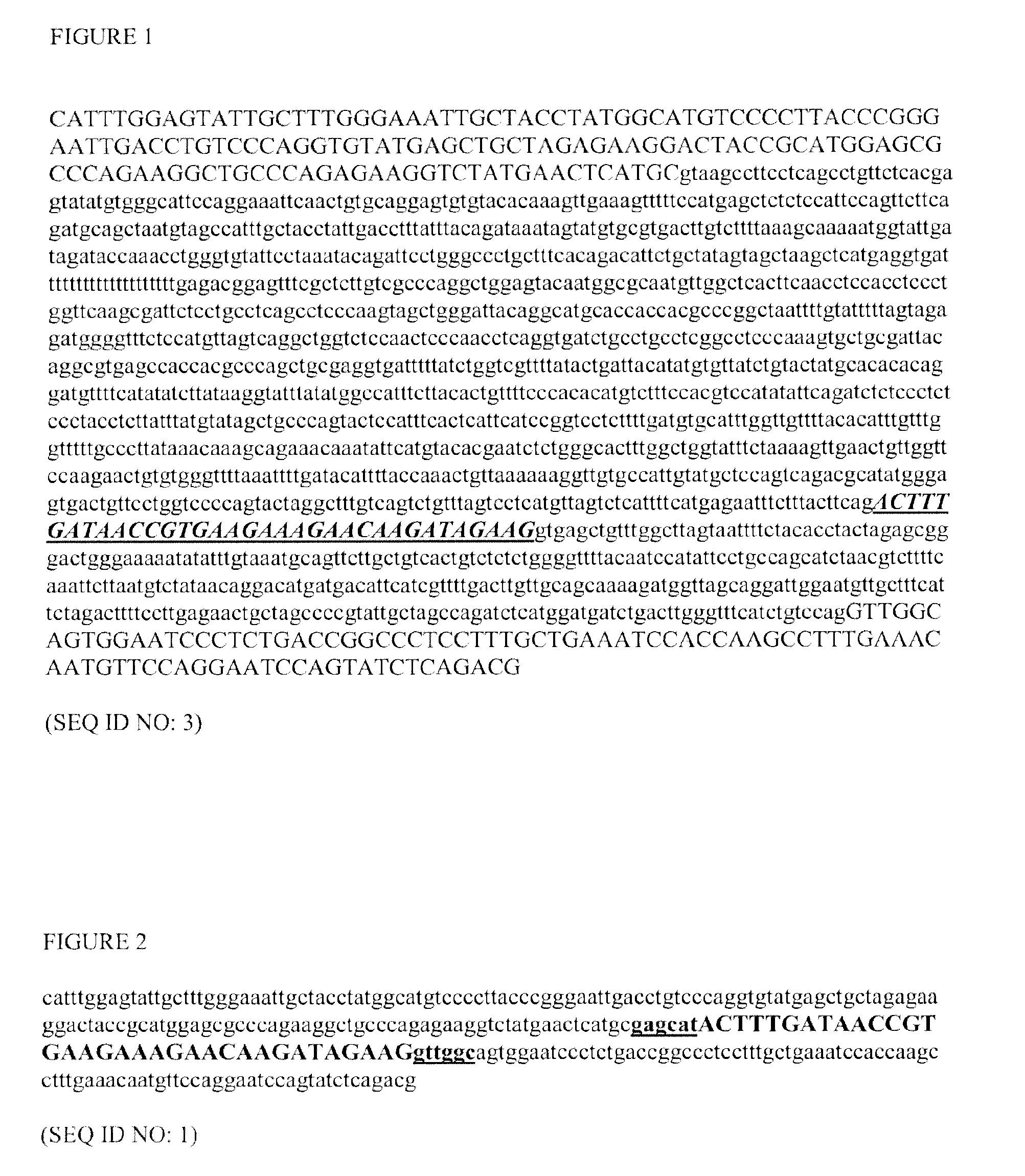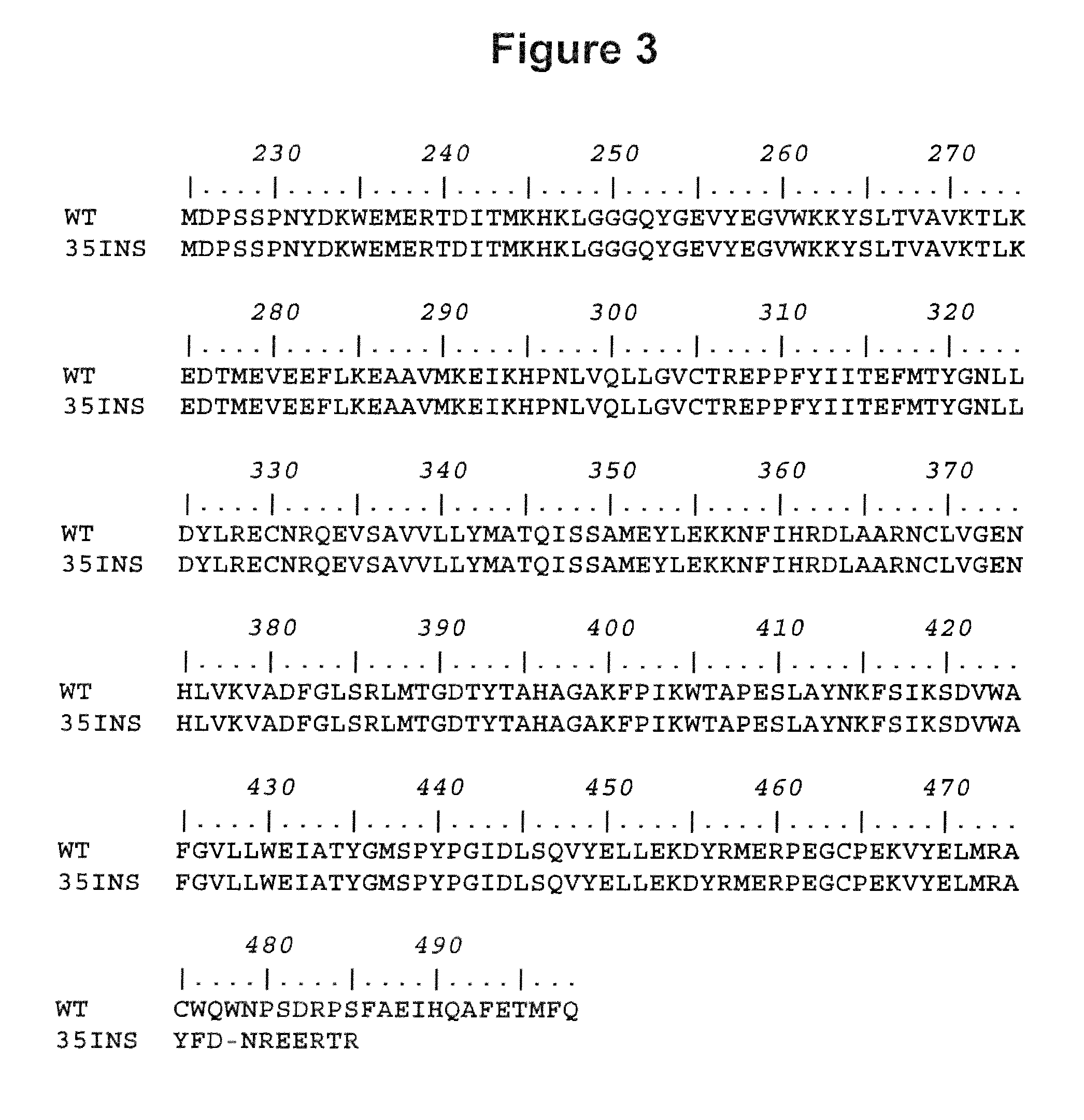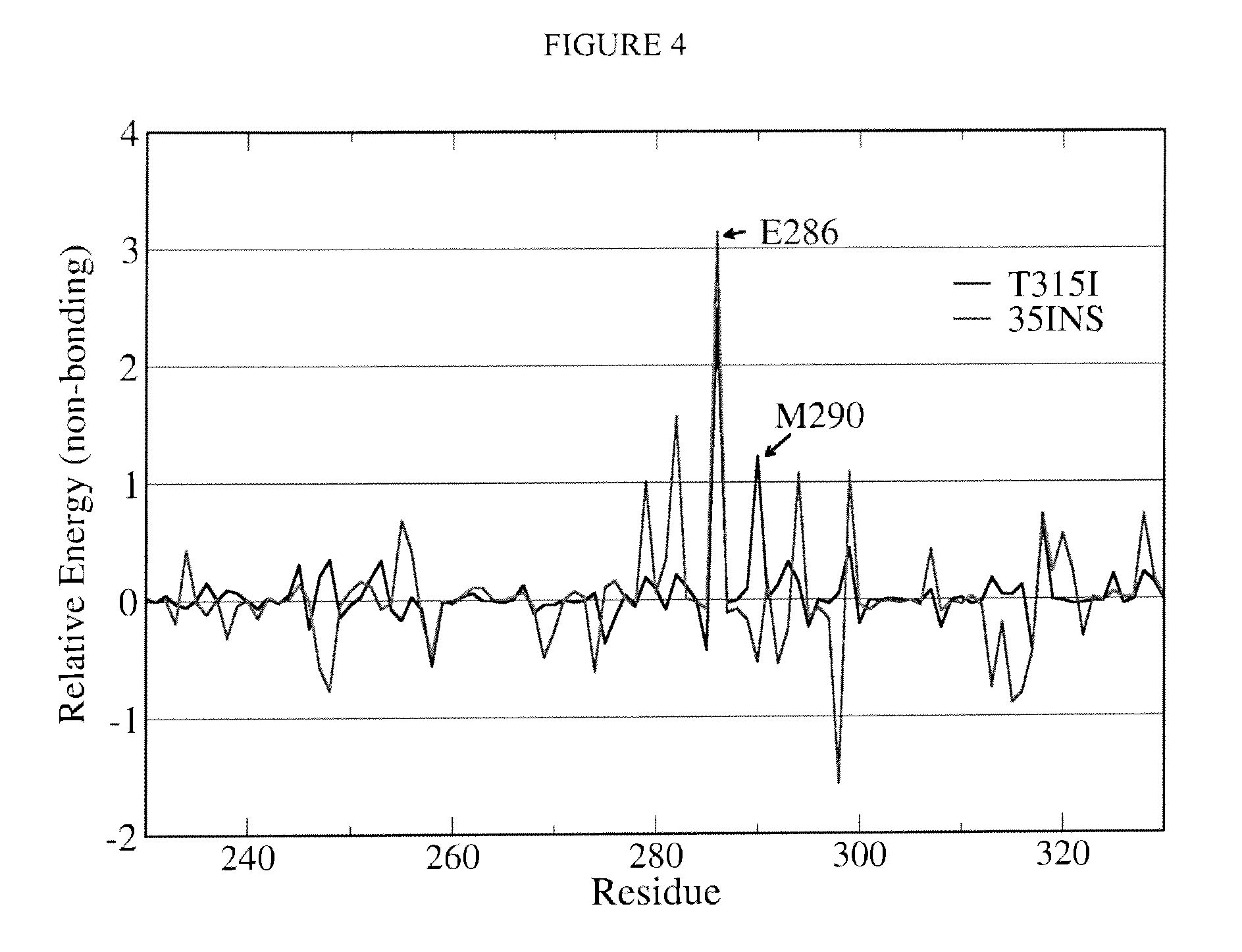Bcr-abl variants
a variant and kinase inhibitor technology, applied in the field of bcrabl variants and resistance to kinase inhibitor therapy, can solve the problems of resistance to imatinib remaining a major problem, undifferentiated blood cells to proliferate, and failure to mature, so as to reduce the viability or growth rate of cells, reduce the viability of genetically modified cells, and reduce the effect of viability
- Summary
- Abstract
- Description
- Claims
- Application Information
AI Technical Summary
Benefits of technology
Problems solved by technology
Method used
Image
Examples
example 1
[0249]Patients: Peripheral blood samples were collected from CML patients with or without imatinib resistance. Some of imatinib resistant patients were also resistant to nilotinib and dasatinib. The diagnosis of CML was established based on the examination of bone marrow morphology, cytogenetic, FISH, and molecular studies. The majority of tested samples were fresh, but a significant number used cells frozen in freezing mix and stored at −70° C.
[0250]Peripheral Blood Samples: Venous blood (5-8 ml) was collected from patients diagnosed with CML using BD Vacutainer™ CPT™ tubes (Beckton Dickenson, NJ, USA, Catalog number: 362760) by venous puncture. Peripheral mononuclear cells and platelets were isolated using manufacturer's protocol. Briefly, venous blood collected into the CPT™ tube was mixed with the anticoagulant present in the tube by inversion. The blood sample was centrifuged at 1500-1800 RCF for 20 min at room temperature (18° C.-25° C.). Plasma was removed fr...
example 2
bcr-abl Mutation Detection and Analysis
[0253]Amplification of the kinase domain of bcr-abl gene: The kinase domain of the bcr-abl gene was amplified by polymerase chain reaction (PCR) using the cDNA derived from CML patient's mRNA as template. The abl kinase domain was further amplified by hemi-nested PCR to generate an 863 bp amplicon.
[0254]The primers used for the first round of PCR are as follows:
BCR-Forward:(SEQ ID NO: 5)5′-TGA CCA ACT CGT GTG TGA AAC TC-3′ABL-R2 Reverse:(SEQ ID NO: 6)5′-TCC ACT TCG TCT GAG ATA CTG GAT T-3′
[0255]The primers for the hemi-nested PCR are as follows:
ABL-F1 Forward:(SEQ ID NO: 7)5′-CGC AAC AAG CCC ACT GTC T-3′ABL-R2 Reverse:(SEQ ID NO: 6)5′-TCC ACT TCG TCT GAG ATA CTG GAT T-3′
[0256]The forward primer, BCR-Forward (SEQ ID NO: 5) annealed to bcr exon b2 and the reverse primer having a sequence of ABL-R2 (SEQ ID NO: 6) annealed to the junction of abl exon 9 and 10. This primer pair will not amplify cDNA with the normal abl gene.
[0257]To the reaction mix...
example 3
Splice Variant Prediction
[0268]To understand the mechanism of insertion of the 35 bp abl intron 8 sequence into the junction of abl exons 8 and 9 in the bcr-abl gene, sequences of abl introns 8 and 9, and exons 8 and 9 were analyzed by GrailExp (Computational Biology at Oak Ridge National Laboratory, Oak Ridge, Tenn., USA) and FGENES (Softberry Inc., Mount Kisco, N.Y., USA) softwares for possible exon sites. Both softwares predicted that an insertion of 35 bp sequence from abl intron 8 between exon 8 and 9 will create an alternatively spliced bcr-abl mRNA with a new exon between exons 8 and 9 resulting in an insertion / truncation mutation (Table 2). Thus, the possible mechanism of the 35 bp insertion is aberrant RNA splicing.
TABLE 2The predicted exon regions by two pattern-matching based programs.The numbers are the beginning and the end positions of the predicted exons (“GrailExp” and“FGENES”), and the observed exon positions (“abl exon 8” and 35 nucleotide insertionregion). The num...
PUM
| Property | Measurement | Unit |
|---|---|---|
| temperature | aaaaa | aaaaa |
| temperatures | aaaaa | aaaaa |
| pH | aaaaa | aaaaa |
Abstract
Description
Claims
Application Information
 Login to View More
Login to View More - R&D
- Intellectual Property
- Life Sciences
- Materials
- Tech Scout
- Unparalleled Data Quality
- Higher Quality Content
- 60% Fewer Hallucinations
Browse by: Latest US Patents, China's latest patents, Technical Efficacy Thesaurus, Application Domain, Technology Topic, Popular Technical Reports.
© 2025 PatSnap. All rights reserved.Legal|Privacy policy|Modern Slavery Act Transparency Statement|Sitemap|About US| Contact US: help@patsnap.com



